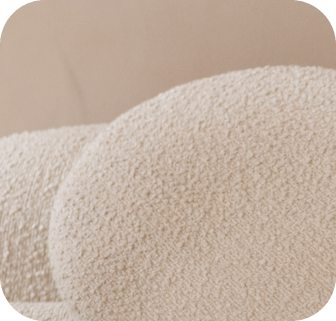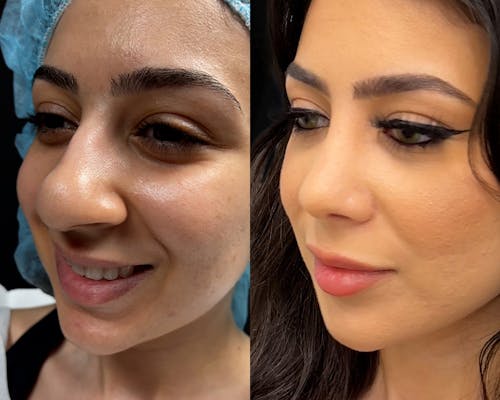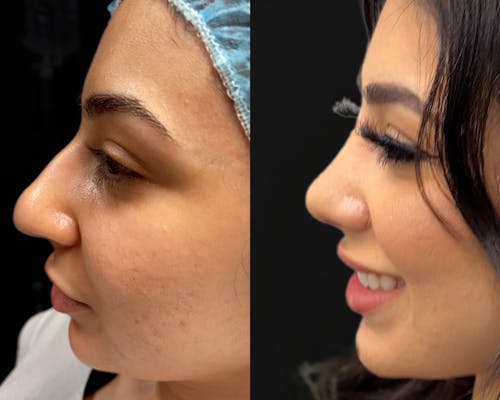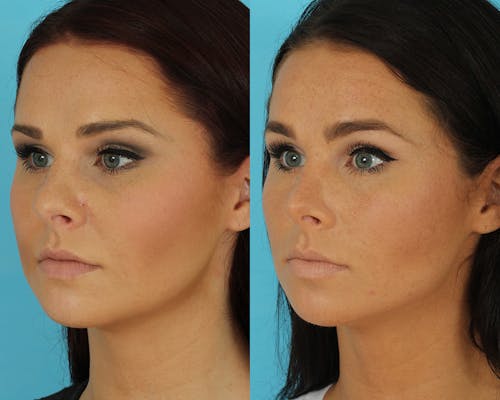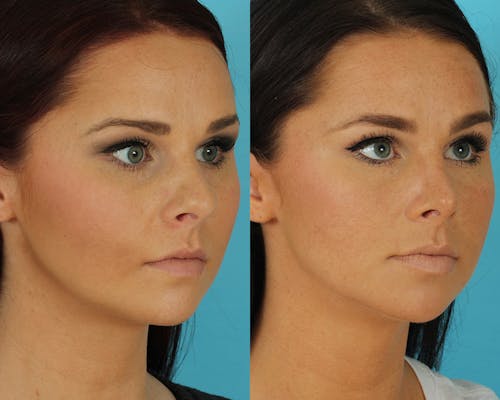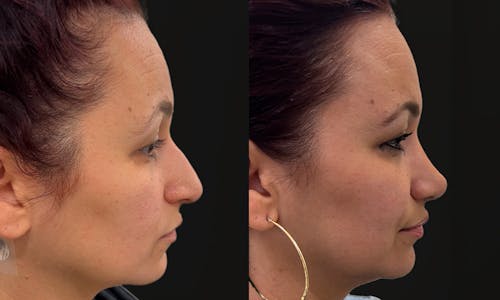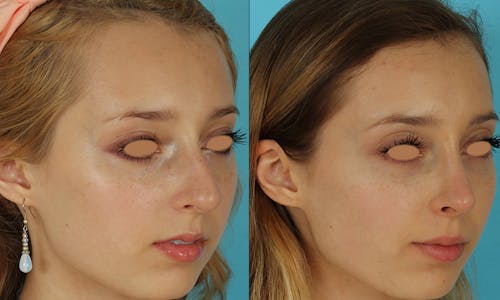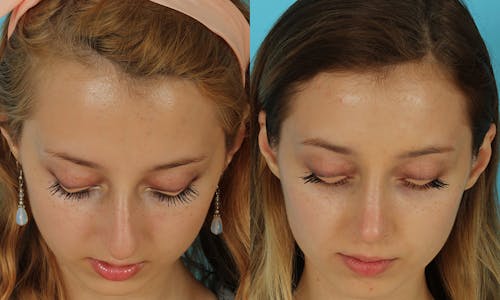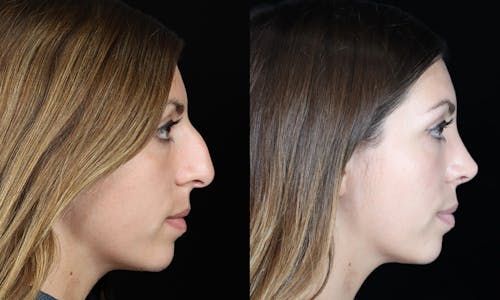Rhinoplasty without osteotomy is a specialized surgical procedure that aims to reshape the nose without breaking the nasal bones. This technique is ideal for patients who require minor adjustments to their nasal structure or those who wish to avoid the potential complications associated with traditional rhinoplasty techniques that involve osteotomies.
Rhinoplasty without osteotomy, also called no osteotomy rhinoplasty, is a less invasive approach to nasal surgery.
Unlike traditional rhinoplasty, which may involve breaking and resetting the nasal bones (osteotomy), this procedure focuses on making subtle changes to the cartilage and soft tissues of the nose.
In general, nasal bone osteotomies are used to close an open roof deformity after hump removal, narrow the lateral walls of the nose, and proportionately align the nasal bone framework to correct any asymmetry. However, the no-osteotomy procedure can also address various concerns, including reshaping the nasal tip, adjusting the nasal septum, and sometimes it is used for dorsal hump reduction.
Evidence-based medicine ratings back this innovative technique, which has been the subject of numerous studies published in reputable medical journals. These studies have shown that rhinoplasty without osteotomy can effectively address a variety of nasal concerns while minimizing potential risks and complications.

